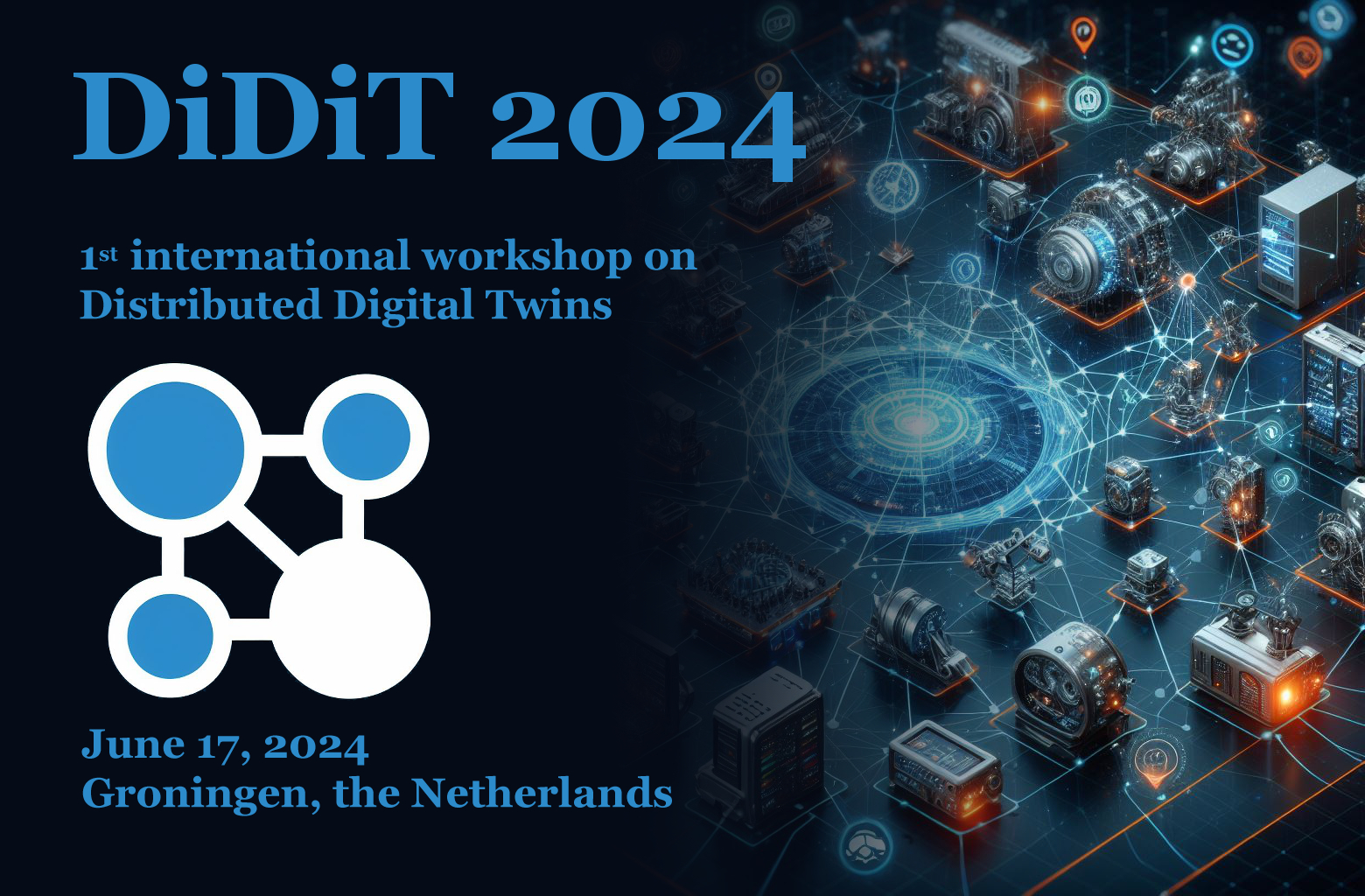
DiDiT 2024 - Accepted papers
Cybersecurity in Distributed Industrial Digital Twins: Threats, Defenses, and Key Takeaways,
,
(2024).
Distributed digital twins are designed to enhance the intelligence, predictability, and optimization of industrial assets by actively engaging, synchronizing, and collaborating with their physical counterparts, i.e., the systems they model, in near real time. This interoperability allows for seamless connections between real systems and their virtual counterparts, thereby facilitating the flow of data while aggregating vital information for comprehensive insights across large entities. However, the constant exchange of data and dependency on the information technology and operations technology process integrations in the digital twin give rise to various cybersecurity challenges. These include threats to data, unauthorized accesses, as well as threats to the integrity and reliability of the digital tools and the services they offer, among others. In this paper, we discuss the relevant cyberthreats within digital twins ecosystems, which we then analyze while outlining different strategies to mitigate such threats. As a result, we present key takeaways toward a secure and reliable digital twin platform. Finally, different challenges are raised to highlight the status quo on the security of digital twins and areas for improvement.
Development and Evaluation of a FIWARE-based Digital Twin Prototype for Road Systems,
,
(2024).
The mobility of people and goods is a central basis of our modern society with increasingly global and diverse networked processes. In its present form, mobility, especially with regard to road traffic, is currently confronted with global challenges (durability, safety, efficiency, ecology, costs, automation, etc.) that urgently require fundamental solutions. In particular, we have to revise the way we plan and build roads and increasingly take the potential of technical innovations (digitalization or sensors) into account. To enable a more sustainable, safer, and more efficient construction and operation of roads in the future, a digital twin for the road of the future is currently under development in the Collaborative Research Center 339 at TU Dresden and RWTH Aachen. This paper describes a comprehensive case study we conducted on this digital twin road using the FIWARE open-source platform.
An Implementation Model for Correct Audit Logging in Cyber-Physical Systems,
,
(2024).
The widespread presence of cyber-physical systems necessitates a reliable assurance mechanism for audit logging across various discrete and continuous components of these systems. This paper explores an implementation model for cyber-physical systems. We introduce an algorithm designed to equip such systems in accordance with a formal specification of audit logging requirements, which provably ensures the generation of accurate audit logs in any instrumented system. The accuracy of the audit log is studied within an information-algebraic semantic framework of audit logging.
Reliability-by-design for Digital Twins: Value Creation and Trust Throughout the Lifecycle,
,
(2024).
Digital twins are reshaping the way systems are operating across various domains, seamlessly integrating the physical and digital realms, yet their full potential is often hindered by foundational challenges. This paper proposes a “Reliability-by-Design” approach, which is essential not just as a feature, but as a cornerstone in the life-cycle of digital twin applications. By embedding reliability from the outset, digital twins are considered more than just technological achievements as they become reliable assets that enhance operational effectiveness and unleash their true value to the organisation in question. We emphasize on the necessity of reliability for ensuring digital twins that are effective, efficient, and valuable. Through exploring the alignment of Reliability-by-Design with organizational objectives such as improved risk management, alignment with users and organisation’s needs, and adaptability to changes, this paper highlights its role in supporting decision-making and achieving resilience while reducing costs. Emphasizing a value-driven approach, we advocate for the adoption of Reliability-by-Design to elevate the impact and sustainability of digital twin technologies across various sectors.
Realising Distributed Digital Twins within Federated Digital Infrastructures,
,
(2024).
Digital twins are a concept that has initially become popular in an industrial context to support product life cycle management. Over time, the number of domains where this concept is applied has grown significantly This includes, in particular, domains where distributed digital infrastructures become mandatory for operating digital twins. A prominent example is the earth systems, weather, and climate domain. In the area of digital infrastructures, we observe significant efforts towards the federation of computing, storage, and data management services. In the context of digital twins, we consider efforts of particular interest that aim for distributed digital infrastructures based on geographically distributed resources with services operated by a diversity of organisations. In this paper, we review a choice of digital twin use cases and implementations and analyse the connection to research and development challenges that have been identified in the area of federated digital infrastructures.
Science-Twins: Digital Twins for Interactive Lecture Demonstrations,
,
(2024).
Digital twins are increasingly utilized across various sectors, including industry and education, due to their significant advantages in our increasingly digital world. Particularly in education, digital twins offer interactive and comprehensive learning experiences. This paper explores the benefits of integrating digital twin technology into classroom settings and proposes a proof-of-concept application suitable for both in-person and online learning environments. The application aims to enhance student engagement by providing interactive tutorials and experiments with the ability to replay digital twin simulations. By offering real-time data observation alongside simulation-based learning, the application enriches the learning experience. Moreover, the paper also provides a brief literature review on the topic of digital twins in smart classrooms.